TxSSC
Texas School Safety Practices Survey Report
Executive Summary
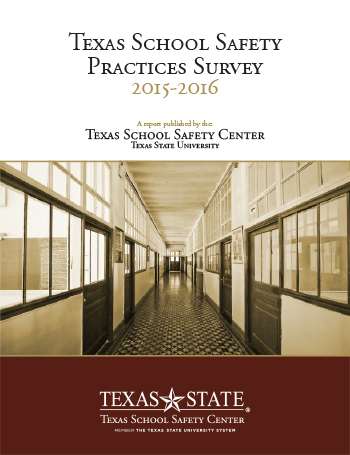
The purpose of this survey was to identify practices currently being used to promote safety in schools, and to assess any contextual aspects of these practices. In collecting this information, the Texas School Safety Center aimed to develop a more translational approach to school safety, which can be used by schools in diverse settings throughout the state. This survey was completed by administrators, teachers, and law enforcement in schools across Texas. The results of this study will inform the basis for future targeted and transferable research on school safety.
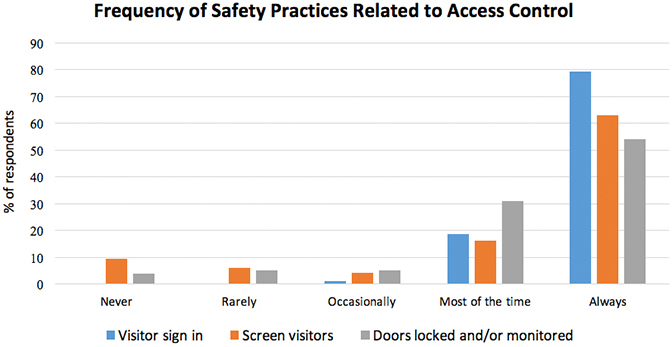
Introduction
The concept of school safety encompasses a wide range of topics such as violence prevention, emergency management, and digital safety. While each of these topics has been subject to a fair amount of research, the concept of school safety, as a whole, lacks a guiding theoretical, and relatively little is known about the actual practices schools employ to maintain safety.
“The purpose of this survey was to identify practices currently being used to promote safety in schools”
The purpose of this study was to examine the types of safety practices currently being used by schools across the state of Texas. A practice refers to an action that applies a theory about school safety. For example, surveillance by CCTV cameras would be a "practice," applying the theory that students under supervision are less likely to act inappropriately than students who are not being supervised. Other practices might include monitoring school entrances, or ensuring maintenance and cleanliness in the school environment. By collecting information about these practices, the Texas School Safety Center (TxSSC) seeks to develop a more translational approach to school safety research and practice in support of its mission to create safe, secure, and healthy school environments.
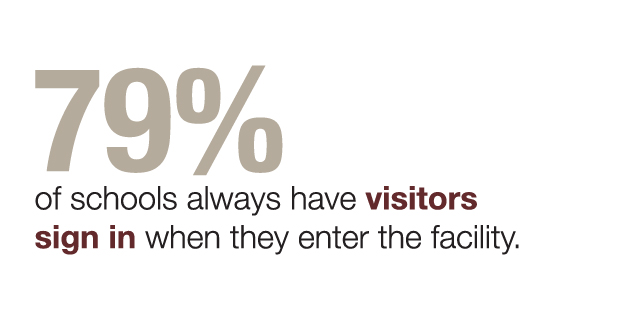
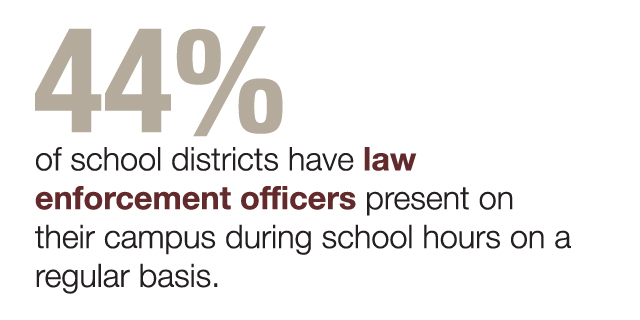
Methods
The TxSSC developed a survey to assess the prevalence of various school safety practices, with questions on topics such as access control, supervision, and documentation of student misconduct. The physical, social, and cultural environments were also considered. All schools in Texas were stratified by community type – such as urban, central city suburban, or rural – and selected according to a proportionate sampling design to enhance representativeness of results.
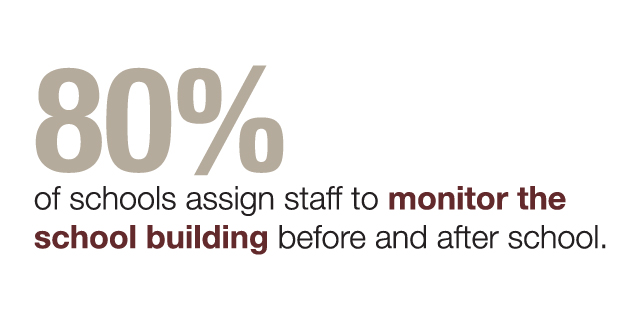
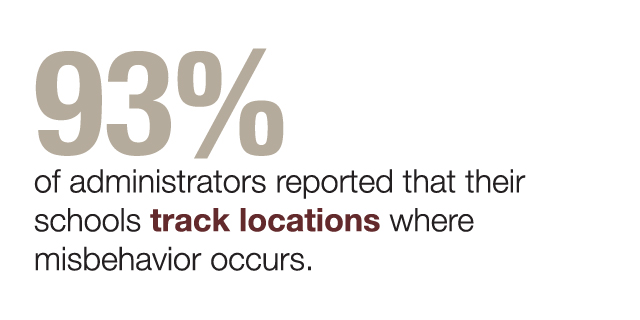
The survey was delivered online using Snap Survey software. Three versions of the survey were provided to each school: one to be completed by the school principal (or designee), another to be completed by a teacher, and another to be completed by a law enforcement officer that worked in the school, if applicable. A total of 487 administrators, 273 teachers, and 118 law enforcement officers responded to the survey.
Findings
- Administrators reported using practices relating to access control, such as screening visitors (90.6 percent) and locking doors (96.1 percent). Practices relating to monitoring, such as CCTV cameras and hall passes, were reported less frequently (87.7 percent and 49.7 percent, respectively).
- The majority of administrators (93.8 percent) reported that metal detectors were "never" used in their schools.
- Law enforcement officers reported conducting personal searches on students more often with probable cause (81.4 percent) than without (71.2 percent).
- Teachers reported that "most" or "all" teachers at their school are assigned to monitor areas outside of their classroom during passing period (19.8 percent and 54.9 percent, respectively).
- Teachers tended to "strongly agree" that their school effectively taught students how to resolve conflicts, helped students with problems at home or other students, communicated behavior expectations, and used best practices to guide their responses to student misbehavior.
- Teachers often reported that suspension was used "all of the time" (33.3 percent) or "most of the time" (17.6 percent) for first time violations of alcohol or drug use policies.
- Law enforcement officers displayed contrasting opinions regarding consistent application of school discipline, with 20.3 percent indicating that they "strongly agree" that discipline is consistently applied at their school, and 27.1 percent indicating that they "strongly disagree."
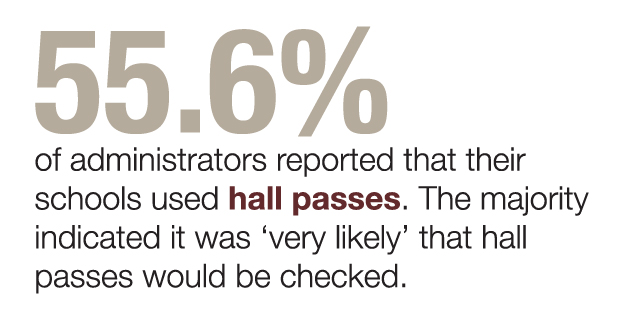
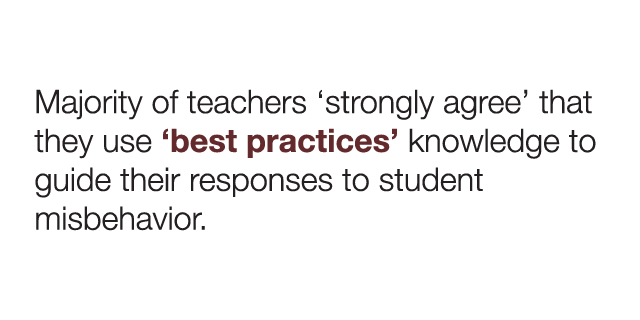
Conclusion
Overall, it appears that practices relating to access control, monitoring, and school climate are generally used in Texas schools. Results from this survey are useful for identifying some of the most common practices used in Texas schools and to identify practices that may be worthy of further investigation. With a move towards evidence-based practices, it will be advantageous to conduct further research on these more commonly used practices.